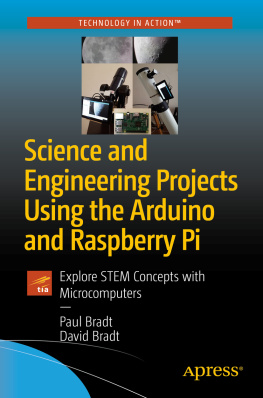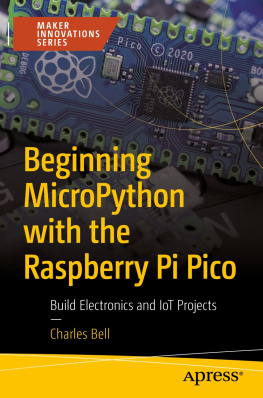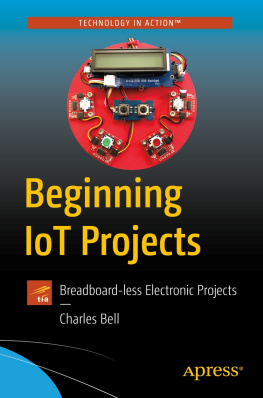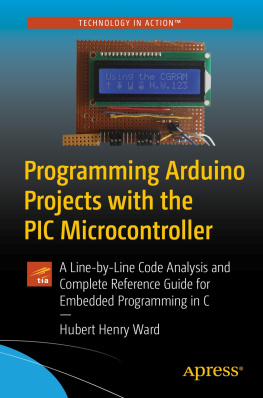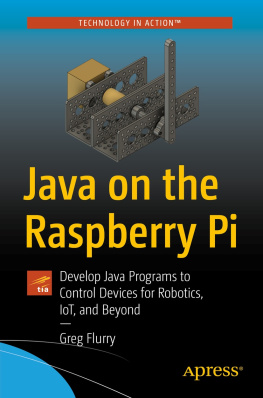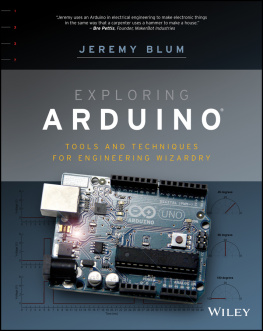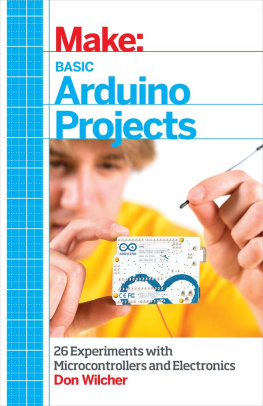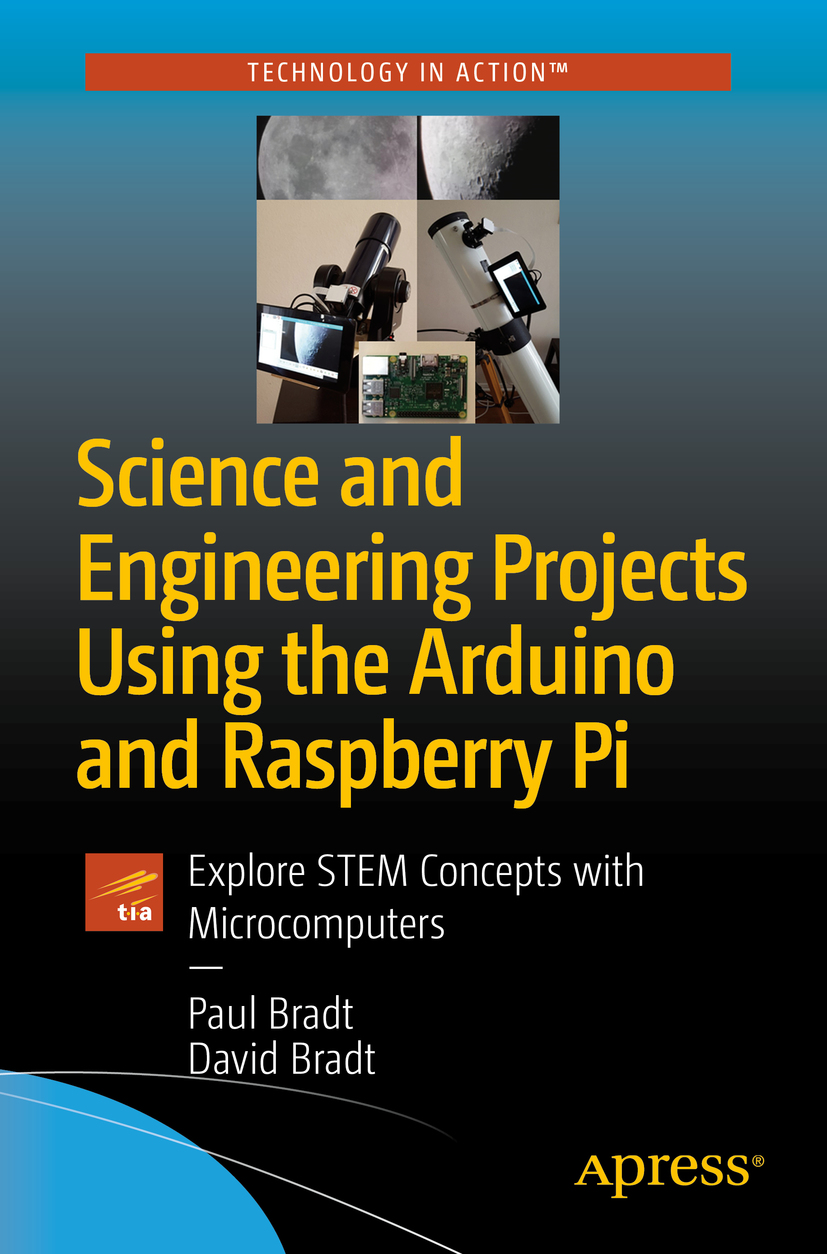Paul Bradt and David Bradt
Science and Engineering Projects Using the Arduino and Raspberry Pi
Explore STEM Concepts with Microcomputers
Paul Bradt
Houston, TX, USA
Any source code or other supplementary material referenced by the author in this book is available to readers on GitHub via the books product page, located at www.apress.com/978-1-4842-5810-1 . For more detailed information, please visit http://www.apress.com/source-code .
ISBN 978-1-4842-5810-1 e-ISBN 978-1-4842-5811-8
https://doi.org/10.1007/978-1-4842-5811-8
Apress standard
Paul Bradt and David Bradt 2020
This work is subject to copyright. All rights are reserved by the Publisher, whether the whole or part of the material is concerned, specifically the rights of translation, reprinting, reuse of illustrations, recitation, broadcasting, reproduction on microfilms or in any other physical way, and transmission or information storage and retrieval, electronic adaptation, computer software, or by similar or dissimilar methodology now known or hereafter developed.
The use of general descriptive names, registered names, trademarks, service marks, etc. in this publication does not imply, even in the absence of a specific statement, that such names are exempt from the relevant protective laws and regulations and therefore free for general use.
The publisher, the authors and the editors are safe to assume that the advice and information in this book are believed to be true and accurate at the date of publication. Neither the publisher nor the authors or the editors give a warranty, expressed or implied, with respect to the material contained herein or for any errors or omissions that may have been made. The publisher remains neutral with regard to jurisdictional claims in published maps and institutional affiliations.
Distributed to the book trade worldwide by Springer Science+Business Media New York, 233 Spring Street, 6th Floor, New York, NY 10013. Phone 1-800-SPRINGER, fax (201) 348-4505, e-mail orders-ny@springer-sbm.com, or visit www.springeronline.com. Apress Media, LLC is a California LLC and the sole member (owner) is Springer Science + Business Media Finance Inc (SSBM Finance Inc). SSBM Finance Inc is a Delaware corporation.
The authors dedicate this book to all of the Science, Technology, Engineering, Math (STEM) teachers who guide and shape the paths of many young minds (including ours) to question, learn, and utilize new technology to solve problems. Without these unsung heroes, the world would not have powerful cell phones, highly reliable cars, the Internet, and many other amazing things we routinely take for granted.
Introduction
The authors journey developing this book started in 2013 when they discovered the Arduino microcontroller. It is interesting how something big really starts with one step as they found the Arduino incredibly powerful. Users are able to program it with computer code, and then it executes its instructions for as long as it has power. The authors started evaluating various applications of the Arduino around the house and in their hobby endeavors. In 2017, they started experimenting with the Raspberry Pi minicomputer which enables users to take projects to a whole new level with a low-cost computer that interfaces with sensors. Since a Raspberry Pi is very affordable, a real computer can now be dedicated to operating a system permanently. While requiring some technical steps to set up, both of these tools can be used to gather data, automate tasks, and provide a lot of fun. The authors found it very satisfying to watch a device do several tasks, especially when they set it up. This book chronicles some science and engineering projects the authors developed over the past few years and provides helpful hints, along with a few things to avoid.
There are two primary areas of focus or goals of this book. The first goal is to help the reader explore the Arduino and Raspberry Pi. The second goal is exploring science and engineering in interesting and fun ways.
The projects and concepts in this book are meant to accomplish the first goal by providing information to get an Arduino or Raspberry Pi system set up, running, and ready to capture data. The text provides enough detail for users with average assembly or electrical skills to complete them. Additionally, the goals of learning are to gain knowledge and skills. When the reader engages in a project that requires them to try new things, it reinforces how they learn and gain confidence and encourages them to try even more complex tools and techniques.
The second goal is exploring concepts of STEM (Science, Technology, Engineering, Mathematics) and working through examples to demonstrate basic scientific and engineering concepts. Finally, the authors provide some detail on the mathematics needed to understand and explain the science demonstrated.
Science and engineering provide critical skill sets for the modern world that can be used in everyday life. People use these skills to develop the technology that the modern world relies on. This book can establish these skill sets for a fruitful and rewarding career.
The authors hope this book inspires the reader to expand and explore their own STEM projects by including a wide range from beginner to advanced. From these examples, the reader can learn many techniques, tools, and technologies and apply them beyond the ones listed here; but first, the authors introduce STEM.
What Is STEM?
STEM (Science, Technology, Engineering, Mathematics) is a program based on educating students in science, technology, engineering, and mathematics in an integrated, interdisciplinary approach to learning.
School systems today strive to improve education in STEM. This goal is an area where educators can use outside help developing and improving students knowledge when they actively contribute, design, and build hands-on projects. In many ways, the young mind is excited and motivated building projects. They develop an in-depth understanding of what is required and how it works. The authors believe this is the best way to learn and remember these concepts, which results in a solid STEM foundation for students.
A question not often understood is how the scientific method is different from an engineering approach. Understanding the difference between science and engineering can be seen in the original Star Trek series. Mr. Spock was the science officer, and Montgomery Scott (Scotty) was the chief engineer. Their jobs and how they approached new scenarios or problems really provide a great explanation about the differences and similarities between science and engineering. Lets examine some examples.
Mr. Spock used the term fascinating when describing a new event or phenomenon. The role of science is to expand knowledge and investigate new events. This fascination with new and unique areas is key for a scientist. Scotty, the engineer, on the other hand always had to fix the warp engines, the transporter, or some other critical system. The normal role of an engineer is to develop and implement solutions to problems. In one of the episodes, Scotty indicated he would rather read his engineering journals to learn about how others solved problems than go on shore leave!

